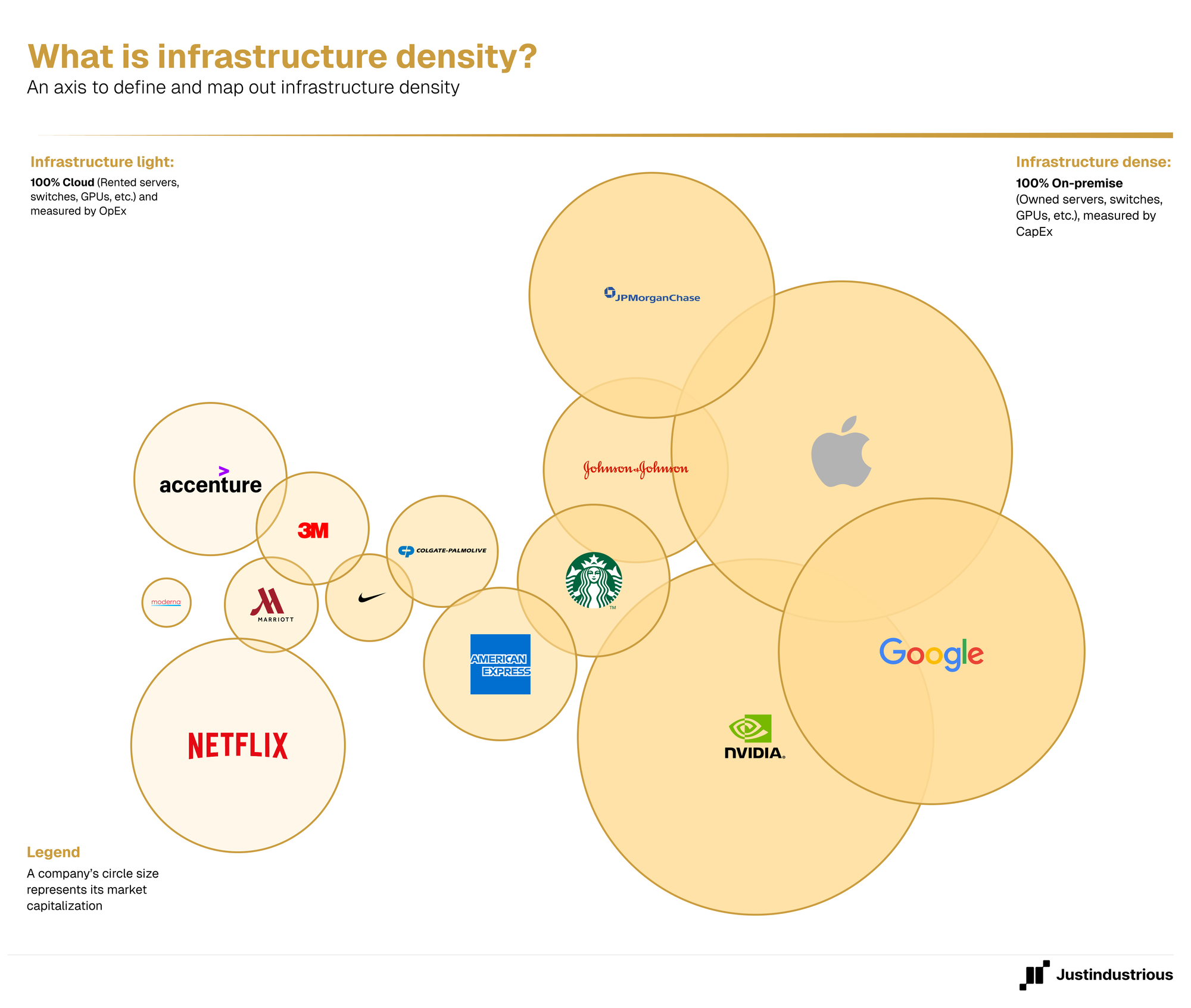Infrastructure density refers to how much infrastructure a company owns and operates in-house, of its total global technical environment.
Companies that rely on public cloud providers (like Marriott International, which uses Google Cloud, AWS, Azure, Snowflake, and Oracle Cloud) sit on the left, at the infrastructure light end of the spectrum.
Companies that own and operate all of their infrastructure (like Google, which runs Google Cloud and uses it to power YouTube and other services) sit on the right, at the infrastructure dense end of the spectrum.

Why does infrastructure density matter?
A company’s infrastructure density affects its organizational structure, financial reporting, and ability to innovate. Companies gain greater sovereignty over data, costs, and innovation when they own and operate their infrastructure.
In the 2010s, many companies shifted from infrastructure dense to infrastructure light by migrating to the public cloud. Capital One was one of them, moving its entire infrastructure to Amazon Web Services (AWS). That decision eventually opened the door for a former AWS engineer to exploit a misconfiguration in Capital One’s environment and access sensitive data from over 100 million individuals. The hacker’s deep familiarity with AWS made it easier to identify the vulnerability and carry out the breach.
Bank of America (BoA) took a different path. While it remained infrastructure dense, it streamlined its footprint by reducing its server count, consolidating data centers, and building out a private cloud. While this approach required investment, it gave BoA more sovereignty, including tighter control over how its infrastructure was configured, accessed, and secured. While BoA has experienced smaller, isolated incidents through third-party vendors, its internal systems have not been breached. Its private cloud has remained secure, and its in-house approach has yielded $2 billion in annual infrastructure savings.
While this example of sovereignty centers on security, another is unfolding in the realm of geopolitics. Data sovereignty has become a growing concern for European governments and companies. As concerns around data control grow, the idea of sovereign clouds built on ownership and independence rather than rental, is starting to resonate more widely.
Infrastructure density is one dimension of InfraOps, and its implications stretch far beyond security or sovereignty. We’ll continue exploring how it shapes strategy, cost, innovation, and more in the updates ahead. Understanding infrastructure density will be one of the keys to making more deliberate infrastructure decisions in an increasingly fragmented world.

